Bytów 2024-08-31
Bytów Railway Station.
Geographic coordinates 54.162N 17.486E. Elevation 128 m (420 ft).
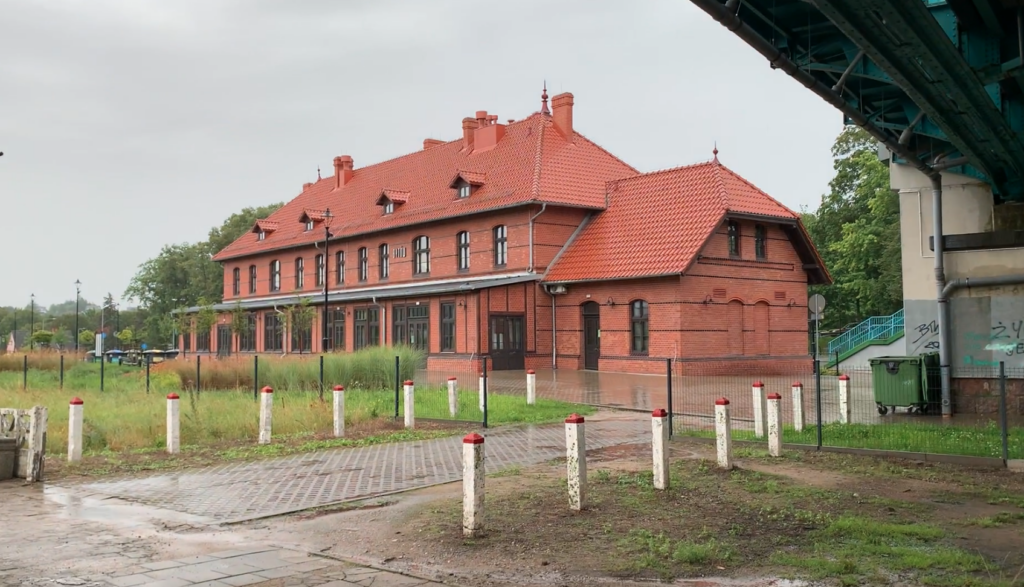
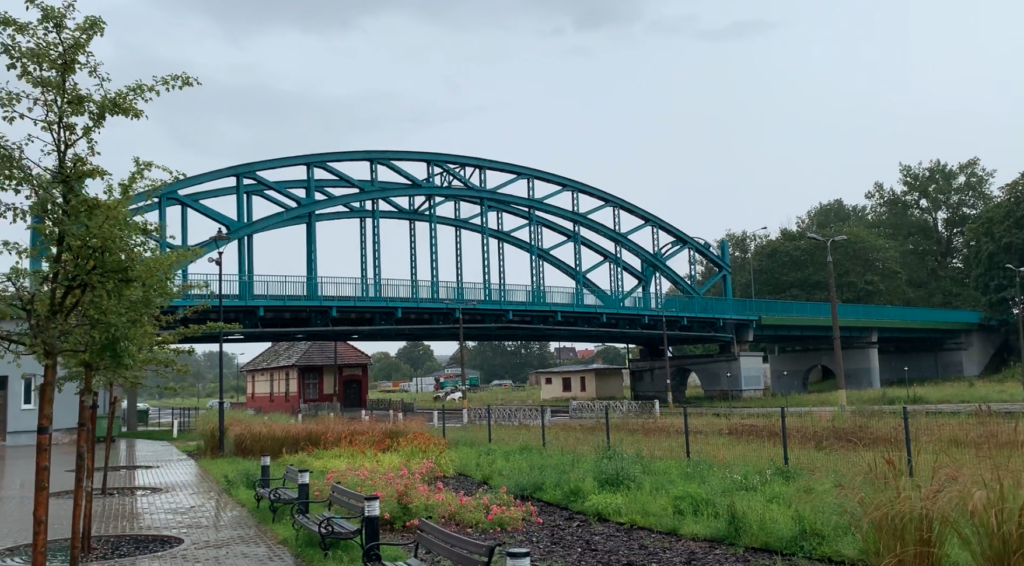
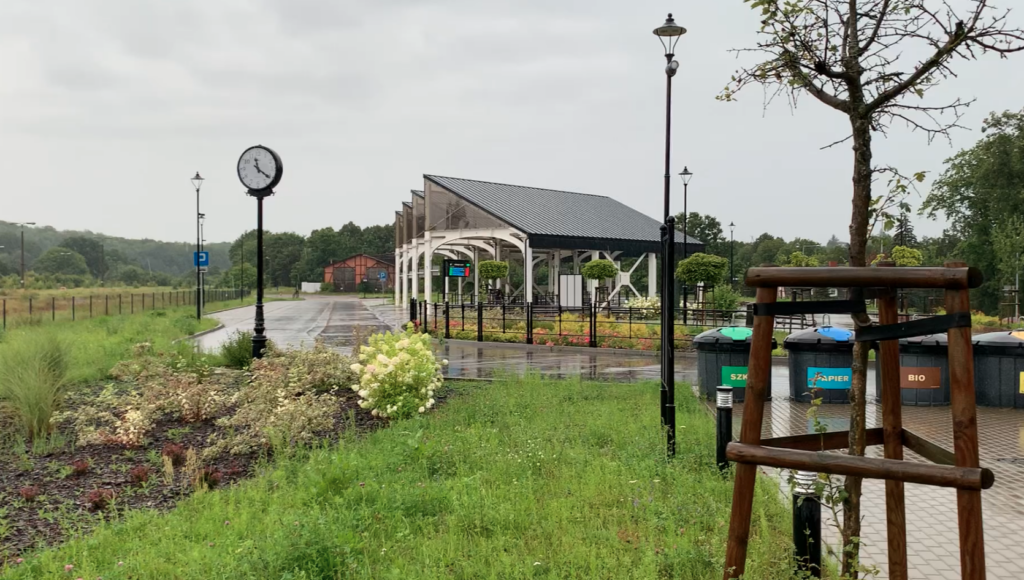
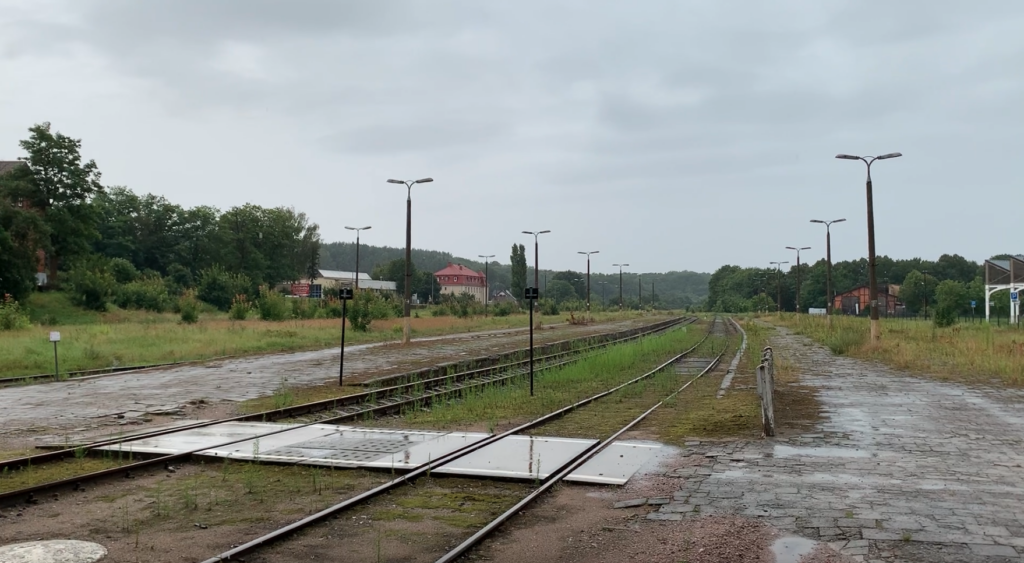
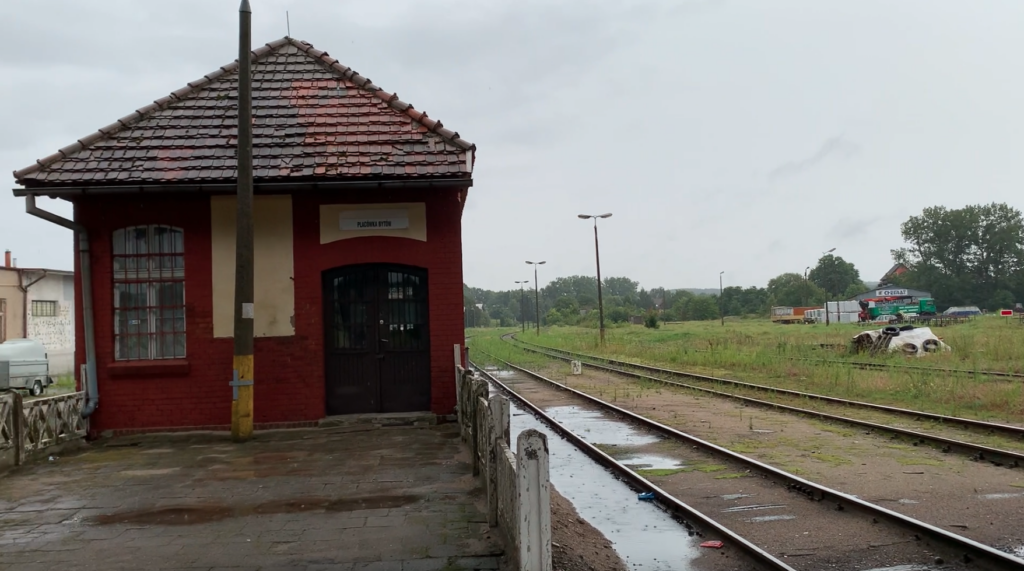
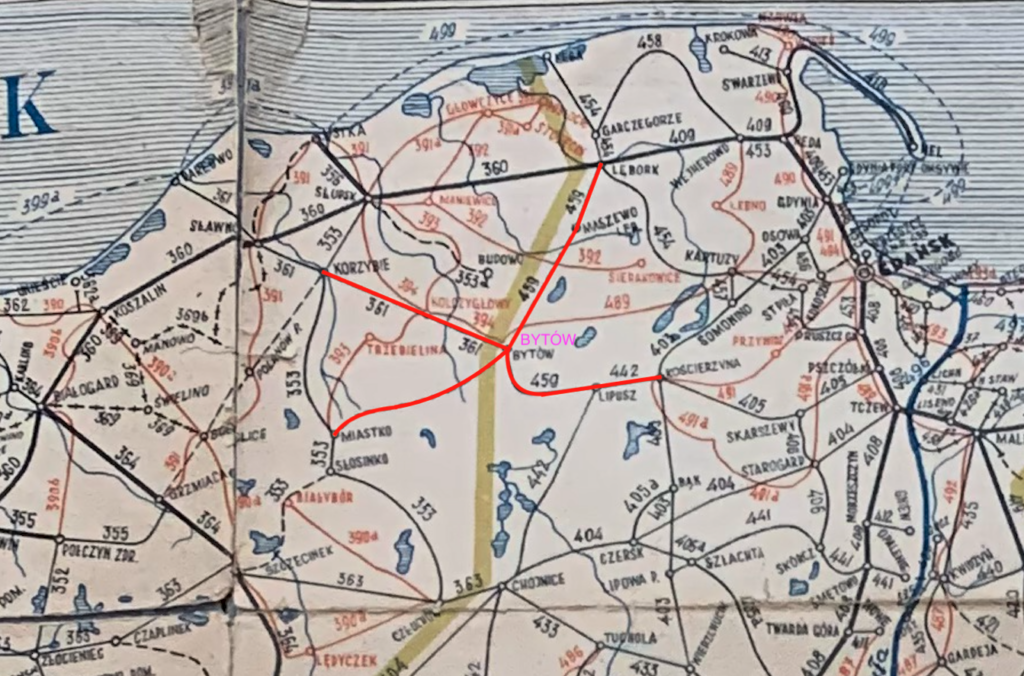

Bytów City.
Bytów is a city in the northern part of Poland, in the Pomeranian Voivodeship, belongs to the Bytów district and is an urban-rural commune. The city obtained city rights in 1346. In the period 1975–1998, the city administratively belonged to the Słupsk Voivodeship. The city’s area is 8.72 km2. In 2023, the city’s population was 16,448 people. The Kashubian name is Bëtowò. Geographically, Bytów lies in the Bytów Lakeland, on the Boruja and Bytowa rivers and Lake Jeleń.
History of the city of Bytów.
In the early Middle Ages, the Pomeranian lands belonged to the Gryfita family, who gravitated towards the Polish Crown. In 1294, the Duke of Gdańsk, Mściwoj, died. He was succeeded by Przemysł II, who later became the King of Poland. In 1307, the area where Bytów lies was forcibly occupied by the Margrave of Brandenburg, Waldemar, with the political and military support of the Teutonic Knights. The oldest record of the city of Butów dates back to 1321. Already in 1329, the Bytów Land was purchased by the Teutonic Knights. The Order established a prosecutor’s office here. In 1342, the Teutonic Knights lost Słupsk, which is why they moved the commandry to Bytów. The castle received city rights on July 12, 1346, under Western law. At the beginning of the 15th century, the Teutonic Knights rebuilt the castle. In 1409, the city and the castle were captured by the Polish Army. After the defeat of the Teutonic Knights at Grunwald, the Polish King Władysław Jagiełło gave the Bytów Land to the Pomeranian Duke Bogusław VIII. In 1454, the Polish King Casimir IV Jagiellon gave Bytów to the Szczecin Duke Eric II. In the period 1526–1637, Bytów, together with the entire Lębork-Bytów Land, was a fief of Poland. In 1637, Bytów with Lębork was incorporated into the Kingdom of Poland. From 1657, Brandenburg (Hohenzollern) took over the Bytów Land, although formally it was still a fief of Poland. In 1772, Bytów was occupied by the Prussians. A period of Germanization, influx of Prussian colonists, and harassment of the Polish population began. Just before the Great World War, Bytów had about 15% of the Polish population, but 40% were bilingual. In 1920, the Treaty of Versailles left Bytów within the German borders. Although it was only 18 km to the state border.
During the interwar period, numerous Polish organizations operated in Bytów. The Polish Bank operated. During World War II, the Secret Military Organization “Gryf Kashubski” operated. On March 8, 1945, the Soviets entered Bytów. In 1945, Bytów was destroyed by 70%. By the decision of the greats of this world, the entire Pomerania was annexed to Poland. In 1946, the name of the city Bytów was officially approved. Bytów returned to Poland after 288 years.
In Bytów there is a Polish castle, which houses the Western Kashubian Museum. In 2013, a sword from the Late Bronze Age (950/900 – 750/700 BC) was found in Bytów. The relic is in the collections of the Western Kashubian Museum in Bytów. There is a historic stone-brick railway bridge over the Boruja River, built in the period 1882–1884. There is a historic tower of the church of St. Catherine. And others.
Railway in Bytów.
In 1884, a railway was brought to Bytów from the Korzybie station (LK Szczecinek – Słupska). In 1901, the LK Bytów — Lipusz was built, simultaneously with the construction of a new station and a new railway station. In 1902, the LK Bytów – Lębork was built. In 1909, the Bytów – Miastko railway line was built. Bytów station slowly became a large junction station. After the Great World War, Bytów remained on the German side, although the state border was only 18 km away.
In 1945, Soviet “trophy” troops dismantled the Bytów – Lębork and Bytów – Miastko railway lines. The Bytów – Lębork line was recreated on the Lębork – Kamieniec (Maszewo) section, due to the construction of the Siemirowice military airport. Since 1945, the Kościerzyna – Lipusz – Bytów – Korzybie railway connection was maintained for freight and passenger traffic. In the 1980s, due to low passenger traffic, the number of connections was reduced. Finally, passenger rail transport was suspended in 1991. Since 2015, efforts have been made to restore passenger trains to Bytów. This optimism was related to the launch of the regional railway; Pomeranian Metropolitan Railway. To date (2024) the plan has not been implemented. The LK Kościerzyna – Lipusz – Bytów section is operational, only for freight traffic.
Railway Line No. 212 Bytów – Korzybie.
Railway Line No. 212 Bytów – Korzybie until 2007, was LK Lipusz – Korzybie. Currently, the line is 47.739 km long. From the very beginning, the line had a rail gauge of 1435 mm. The line was launched in 1883. The line is single-track, non-electrified. Currently (2024) the speed on the route is 20-30 km/h.
LK Korzybie – Bytów was built in two stages. The first section Korzybie – Barnowo was put into service on November 20, 1883, while the Barnowo – Bytów section was opened on August 15, 1884. For the following years, until July 15, 1901, it was the only railway connection of Bytów with other cities.
The track layout in the Korzybie area was adapted to the needs of the Germanic Chancellor Otto von Bismarck, who had an estate in Warcino and used the station in Kępice. The surrounding railway lines were to provide convenient access to Kępice for the Germanic Chancellor’s many clients. For this reason, the track layout at the Korzybie station adopted its current layout. The layout is oriented towards Słupsk and further to Gdańsk and Królewiec, towards Bytów and towards Sławno and further to Berlin.
Initially, the railway station in Bytów was near the city center and was a head station. The railway line ran along a section of today’s Szarych Szeregów Street and a historic railway bridge. When it was decided that Bytów was to be a junction station, the location of the station was changed, moving it to the southern end of the city. At that time, from the Dąbrówka station, the route was led further south, to the location of the new station in Bytów. For a short time, until 1905, the old railway station in Bytów, at today’s Stary Dworzec Street in Bytów, was used.
After the Great World War, when the Republic of Poland was reborn, the LK was divided by the state border. Poland decided not to use cross-border traffic on this route. The Lipusz – Róg section (Widno settlement) was dismantled. It was an element of the defense of the state border. After the Germanic aggression (the outbreak of World War II), the territories of Poland were incorporated into the Germanic Empire. The LK Lipusz – Róg section was quickly rebuilt and intensively used for war purposes.
In 1945, the greats of this world decided to incorporate the entire Pomerania into the borders of Poland. Traffic on the route, due to the war damage and the actions of Soviet “trophy” troops, was restored slowly. It was not until 1947 that the entire route was passable and regular passenger traffic took place. PKP changed the mileage on LK 212. Until 1945, the mileage was counted from the Korzybie station, and after 1945, the mileage was counted from Lipusz. In the town of Lipusz, a railway triangle was restored, which ensured train traffic in any direction without the need to change the train front. After 1945, the line was mainly used for the transport of goods, including timber. Passenger traffic was mainly directed to Kościerzyna, where there were transfers to trains in the direction of the Tri-City.
On 1 August 1991, passenger train traffic was suspended on the Bytów – Korzybie section. For some time, a replacement rail bus service was maintained, and the last timetable with the listed trains was valid until 1992. Until 23 May 1993, there was passenger traffic on the Lipusz – Bytów section. The LK Barnowo – Bytów section was closed to traffic on 1 May 1999.
For many years (since 2011), the Bytów authorities have been seeking the reconstruction of LK No. 212, on the Bytów – Lipusz section. This would enable the connection of Bytów with the capital of the province; Gdańsk. A project study was carried out, which cost PLN 1 million. According to the cost estimate prepared in September 2022, the modernization of the Lipusz – Bytów route would cost PLN 257 million. Unfortunately, the authorities in Gdańsk are not interested in making life easier for the residents of Bytów. The unclear statements of Gdańsk councilors refer to the revitalization of the railway line after 2029. The plans include the restoration of passenger traffic using DMUs, which would move at a speed of 80 km/h. Currently (2024), the Bytów – Korzybie section is impassable.
Bytów Railway Station.
The first railway station in Bytów was located closer to the city center and was a terminal station. The railway line leading to this station ran over a historic railway bridge. The Old Station was demolished in 1905.
The current railway station was put into operation in 1901, when the railway line to Kościerzyna was extended. The building is a compact, two-story structure with a developed attic and basement. It was built of red brick and covered with red roof tiles. The building housed a ticket and luggage office, a waiting room, a telegraph and telephone, a restaurant and railway service rooms. After the liquidation of passenger connections, in 2004, the station was closed. In 2007, the entire station area was taken over by the city of Bytów.
In the period 2020-2021, a new bus station was built, with four new platforms for buses, which are covered. As part of this investment, a major renovation of the station was carried out. On the ground floor there are toilets, a waiting room, a bar (restaurant), two ticket offices. On the first floor there are rooms that are distributed for the needs of the bus station and the Social Housing Association, as well as an IT room. The basement is occupied by the archive, servers and a heat exchanger. The cost of the works amounted to over PLN 18 million. The official opening of the communication center took place on November 19, 2021.
There are two platforms on the station level. Platform 1 is single-edged. Platform 2 is double-edged. The roofs on the platforms have been removed. After 2007, the station level was renovated. At the same time, the track layout was changed. It is possible to conduct railway shunts. Bytów Station is fully suitable for passenger transport. The platforms are well-maintained. On the Lipusz side, there is the “By” Control Room. Under the steel viaduct by the tracks, there is a building in which the telephone exchange was located, which was moved to the “By” control room after passenger transport was suspended. The building housed the traffic controller and the platform controller. Next to this building, between the tracks, there is a former shunting booth in which there is a DT warehouse. At Bytów Station, there was also a fan locomotive shed, which had a turntable. Due to its poor technical condition, the entire building was demolished in 1946. There are two unloading ramps at the Bytów station, which are still in use. Occasionally, special trains with railway enthusiasts come to Bytów.
After this renovation, the Office of Rail Transport allowed the Bytów station to operate. The operation and maintenance of the Bytów – Kościerzyna LK and the infrastructure were handled by the railway company POL-MIEDZ TRANS from Lubin Górniczy. Since 2009, the LK Lipusz – Bytów section has been managed by PMT-LINIE KOLEJOWE Sp. z o.o., a subsidiary of POL-MIEDZ TRANS. In 2014, PMT Linie Kolejowe, the previous operator of the Lipusz – Bytów section, terminated the contract with the city of Bytów for the maintenance of the LK. The previous operator, PMT Linie Kolejowe, was in charge until 31 January 2015, and since 1 February 2015, it has been the SKPL Group.
Railway bridge in Bytów.
The railway bridge in Bytów is one of the most beautiful structures of this type in Pomerania. The bridge was entered on the list of monuments under No. A-1624 on March 27, 1997. The bridge was built in the period 1882-1884. The last renovation was carried out in the period 2017-2019 and the bridge gained illumination. The bridge is a crossing over the Boruja River, on the old section of the railway line to the Old Railway Station. The total length of the bridge is 73.45 m. The maximum height is 16.09 m from the water surface. The total width of the bridge is 5.53 m. The span of the spans is about 11.50 m. The elevation of the old track is 129.70 – 129.98 m. The bridge has 6 arcade spans. It was made of stone (pink and gray granite) and red brick. On the elevation of the bridge there are medallions made of sandstone, and coats of arms are placed on them. Currently, the bridge functions as a pedestrian walkway.
Written by Karol Placha Hetman
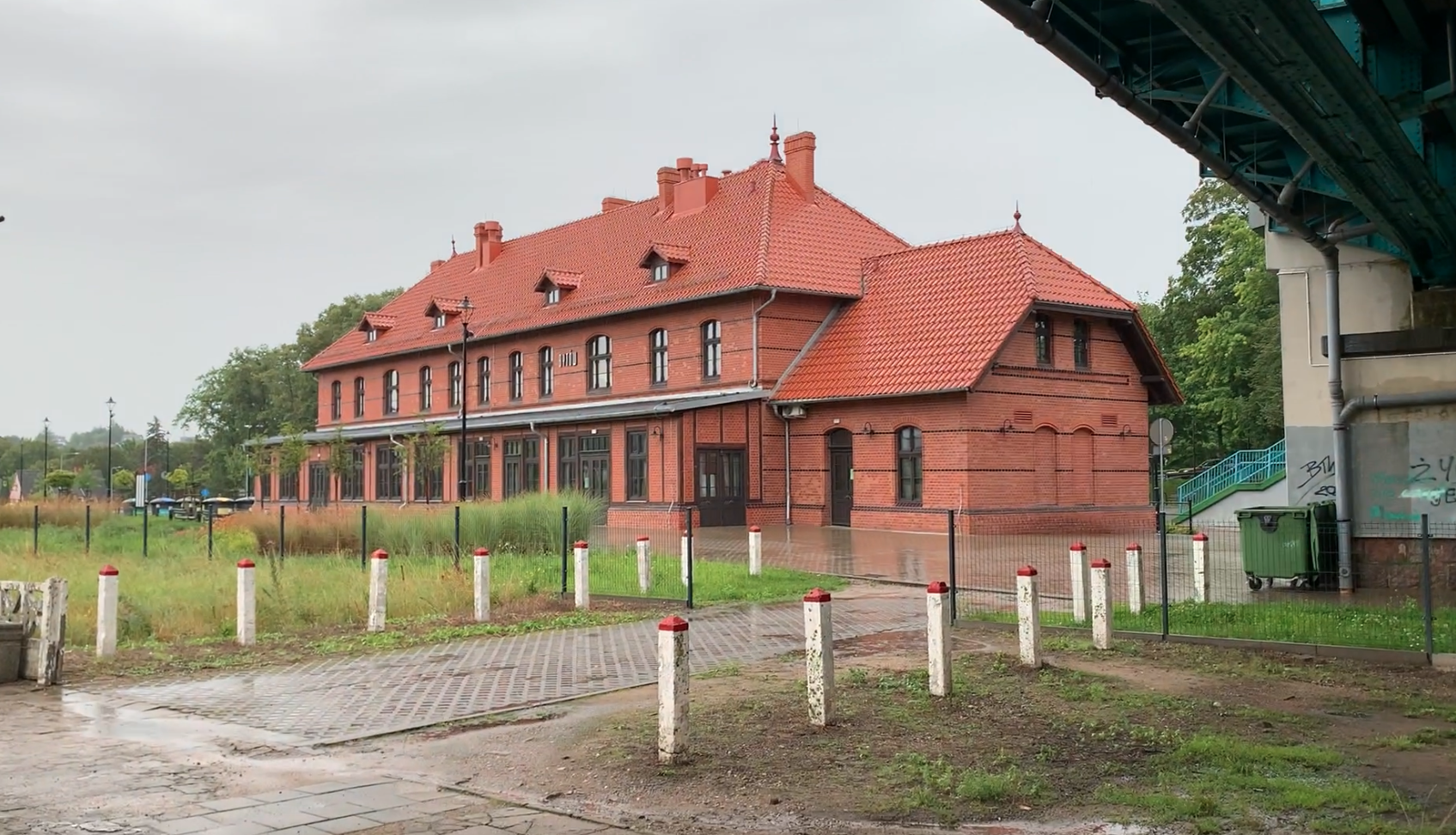
Leave a Reply
You must be logged in to post a comment.